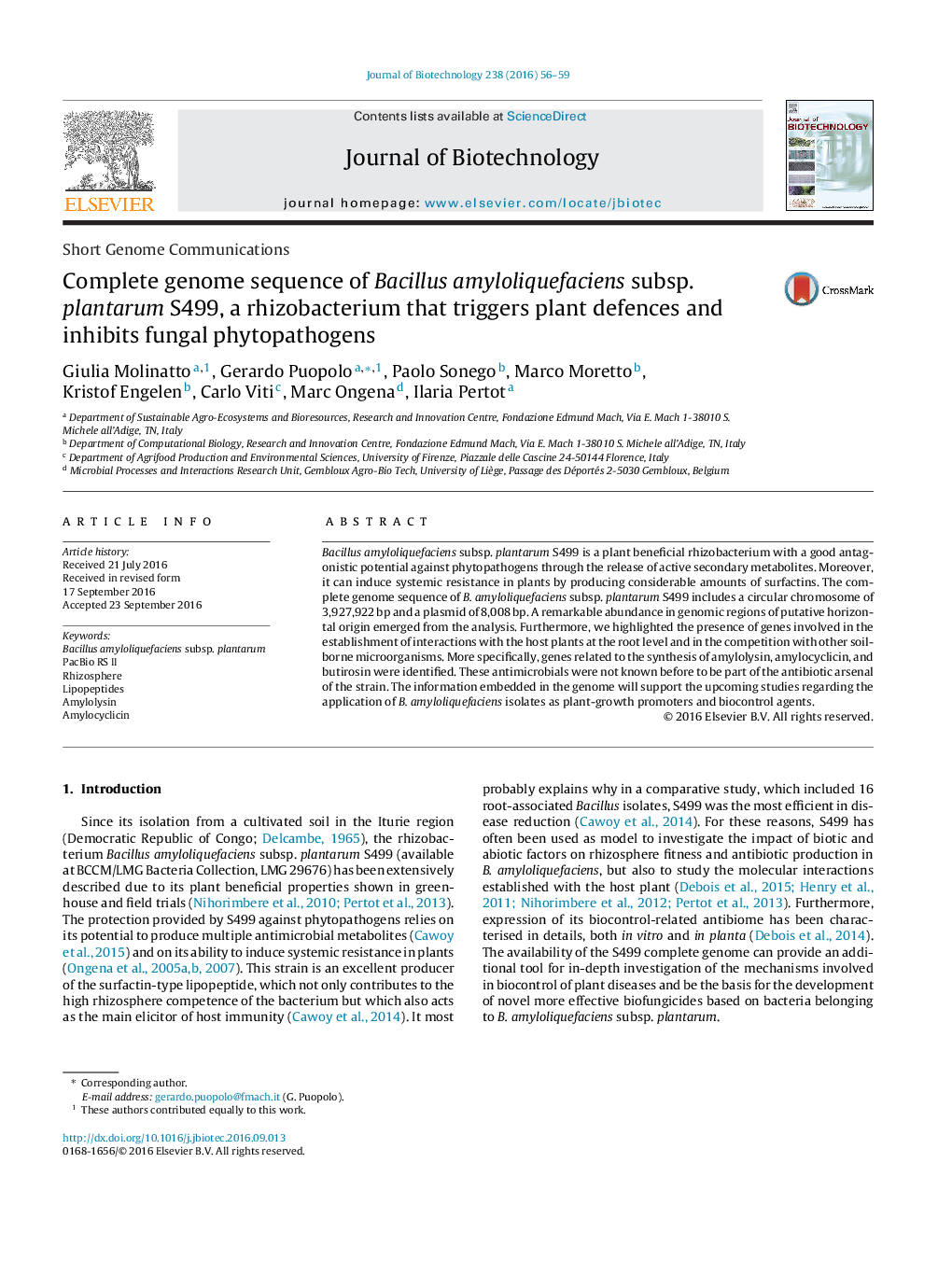| Article ID | Journal | Published Year | Pages | File Type |
|---|---|---|---|---|
| 4753727 | Journal of Biotechnology | 2016 | 4 Pages |
Abstract
Bacillus amyloliquefaciens subsp. plantarum S499 is a plant beneficial rhizobacterium with a good antagonistic potential against phytopathogens through the release of active secondary metabolites. Moreover, it can induce systemic resistance in plants by producing considerable amounts of surfactins. The complete genome sequence of B. amyloliquefaciens subsp. plantarum S499 includes a circular chromosome of 3,927,922Â bp and a plasmid of 8,008Â bp. A remarkable abundance in genomic regions of putative horizontal origin emerged from the analysis. Furthermore, we highlighted the presence of genes involved in the establishment of interactions with the host plants at the root level and in the competition with other soil-borne microorganisms. More specifically, genes related to the synthesis of amylolysin, amylocyclicin, and butirosin were identified. These antimicrobials were not known before to be part of the antibiotic arsenal of the strain. The information embedded in the genome will support the upcoming studies regarding the application of B. amyloliquefaciens isolates as plant-growth promoters and biocontrol agents.
Keywords
Related Topics
Physical Sciences and Engineering
Chemical Engineering
Bioengineering
Authors
Giulia Molinatto, Gerardo Puopolo, Paolo Sonego, Marco Moretto, Kristof Engelen, Carlo Viti, Marc Ongena, Ilaria Pertot,
